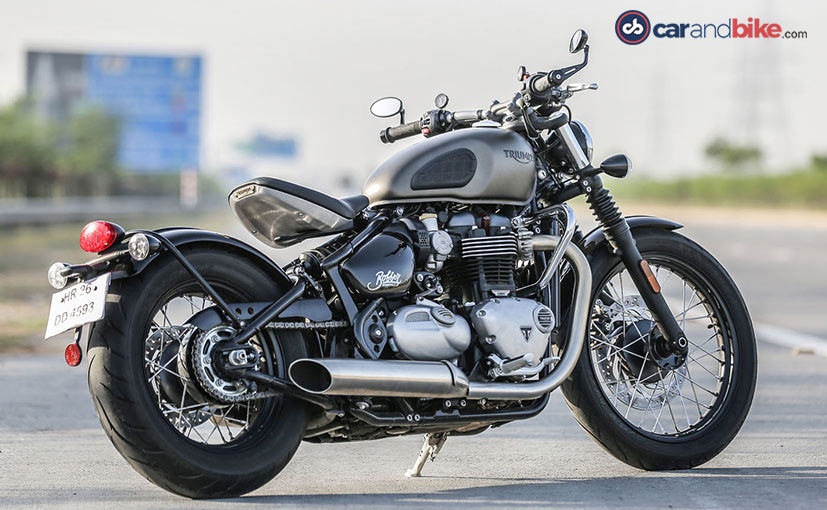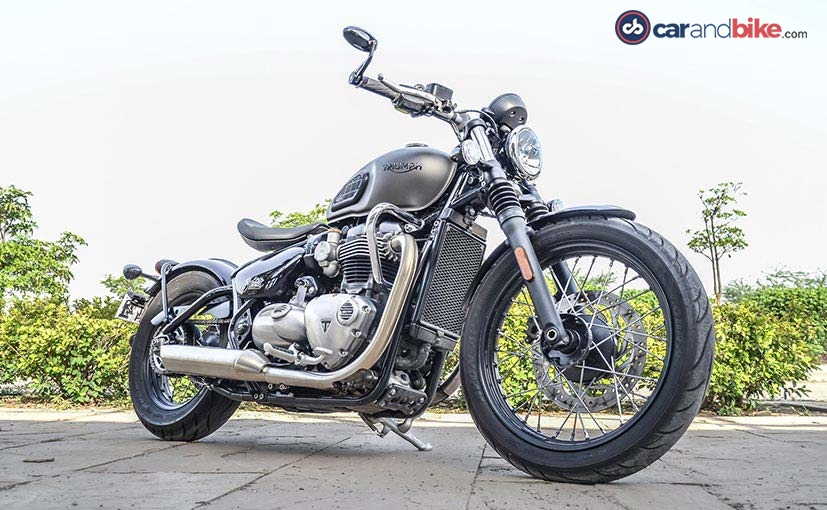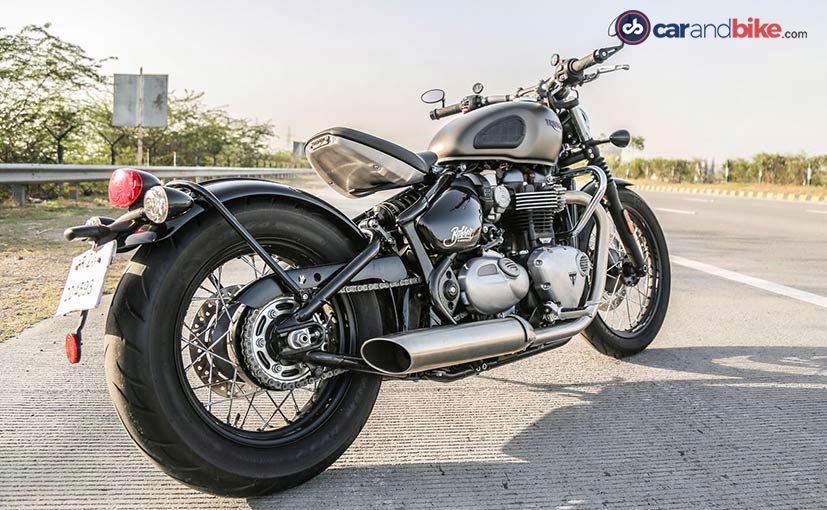
Beautiful design with excellent attention to detail
The fact of the matter is – the Triumph Bonneville Bobber looks good, very good. In fact, it looks even better in “flesh and blood” or “metal and oil”, if you will, than in pictures. But how different can a bike get on an engine which is shared with an existing model? And to top it all, the Bobber gets an extended wheelbase, lower ground clearance and a solo-seat with a hard-tail look. Of course, it can’t be that different! Don’t get me wrong here. We were quite impressed with the Bonneville T120, but just that my personal expectations from the Bobber weren’t sky high, which brings me back to the preconceived notion I had mentioned earlier. It’s just a Triumph design job on the T120, I thought.
The Bobber name
The Bonneville Bobber takes inspiration from the “bob jobs” of the 1940s – essentially, garage-built, stripped down bikes customised and highly personalised by builders. The ’40s bobbers had completely stripped down bodywork to reduce weight. In some cases, front and rear fenders were removed or chopped off, but the overall build job was done around the original frame and geometry. Additional details and minor cosmetic parts were hand-built.

Stripped-down bobber design
With a sort of, ‘back to the original custom bobber’ drawing board, Triumph sprang a surprise with this factory custom. In essence, it’s a stripped down T120, and it retains the Bonneville DNA, but incorporates minimalistic styling, and muscular stance of a genuine, hand-built bobber. The name has had mixed reactions, more so from the purists, who say the term “bobber” is used more in a generic sense and to call the bike ‘Bonneville Bobber’ is kind of strange, since it’s not garage-built in the first place. Factory-built it may be, but the Bonneville ‘Bobber’ has caught on; and just on looks alone, it has the power to turn many heads on the street.
Design
The Triumph Bonneville Bobber is a gorgeous motorcycle, period. Any angle you look at it, it oozes desirability. Park it somewhere, or ride it around town, it attracts approving glances from all kinds of people, not just limited to motorcycle enthusiasts. It may be based on the Bonneville T120, but it certainly doesn’t look anything resembling the T120; in fact, you could say it’s an all-new motorcycle model. The overall shape and silhouette is typical Triumph modern classic, but it’s the attention to detail that underscores how fabulous a job the Triumph designers did on the Bobber. The more you look at it, the more it begins to grow on you, this beautiful piece of modern engineering and classic design.

Drop-dead gorgeous looks
All the high-tech electronics and the accompanying wiring are neatly tucked away from plain view. The ignition key has been moved to the side, the single-pod instrument panel gets an analogue speedometer and a small digital screen with multiple information display. The bar-end mirrors keep things neat and tidy on the handlebar and the single-seat pan hides the concealed rear shock underneath. There’s an authentic ‘vintage’ battery box with a stainless steel strap, and the throttle bodies are designed like old-school carbs.
[Source”timesofindia”]
